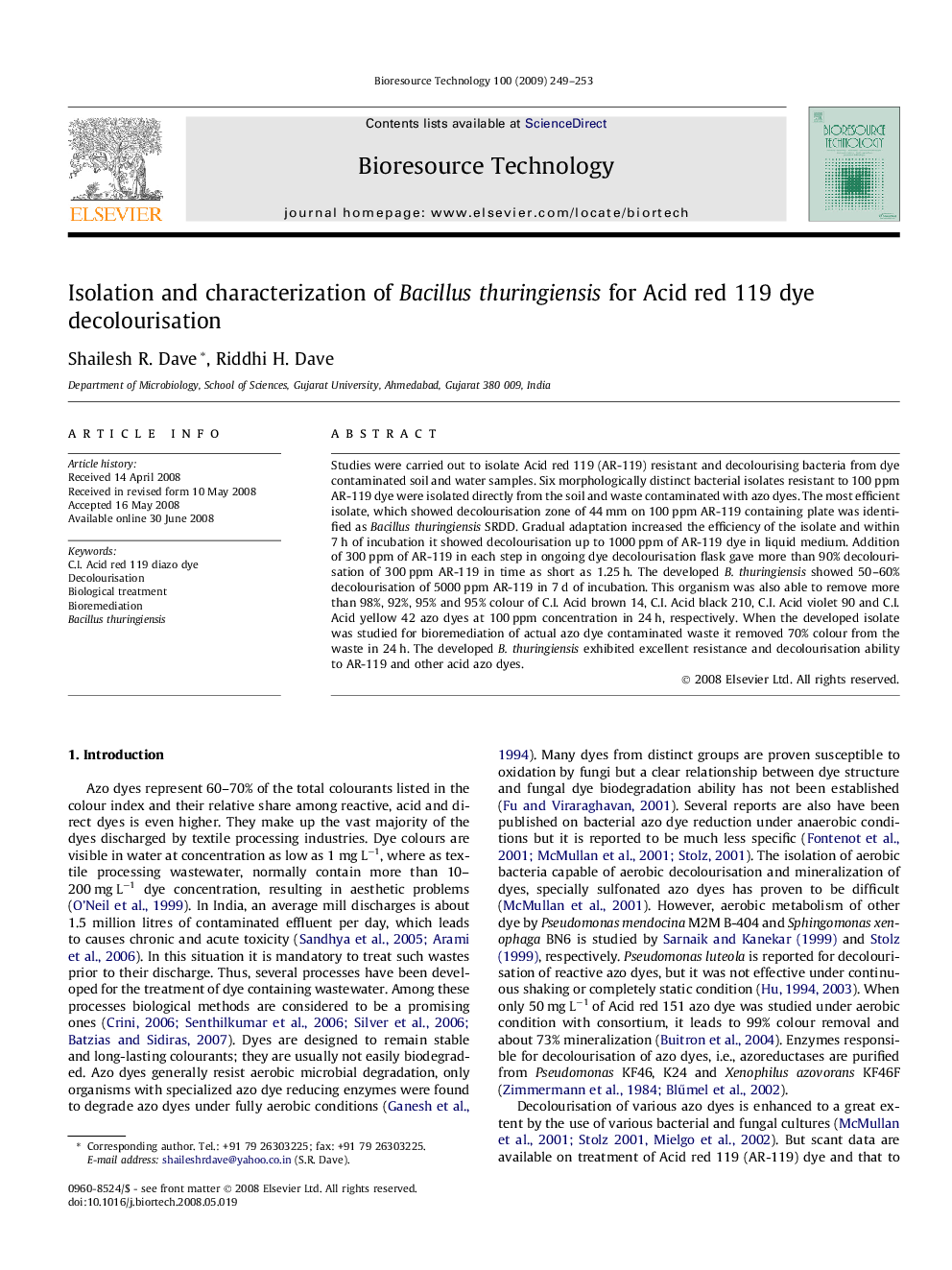| Article ID | Journal | Published Year | Pages | File Type |
|---|---|---|---|---|
| 684253 | Bioresource Technology | 2009 | 5 Pages |
Studies were carried out to isolate Acid red 119 (AR-119) resistant and decolourising bacteria from dye contaminated soil and water samples. Six morphologically distinct bacterial isolates resistant to 100 ppm AR-119 dye were isolated directly from the soil and waste contaminated with azo dyes. The most efficient isolate, which showed decolourisation zone of 44 mm on 100 ppm AR-119 containing plate was identified as Bacillus thuringiensis SRDD. Gradual adaptation increased the efficiency of the isolate and within 7 h of incubation it showed decolourisation up to 1000 ppm of AR-119 dye in liquid medium. Addition of 300 ppm of AR-119 in each step in ongoing dye decolourisation flask gave more than 90% decolourisation of 300 ppm AR-119 in time as short as 1.25 h. The developed B. thuringiensis showed 50–60% decolourisation of 5000 ppm AR-119 in 7 d of incubation. This organism was also able to remove more than 98%, 92%, 95% and 95% colour of C.I. Acid brown 14, C.I. Acid black 210, C.I. Acid violet 90 and C.I. Acid yellow 42 azo dyes at 100 ppm concentration in 24 h, respectively. When the developed isolate was studied for bioremediation of actual azo dye contaminated waste it removed 70% colour from the waste in 24 h. The developed B. thuringiensis exhibited excellent resistance and decolourisation ability to AR-119 and other acid azo dyes.
